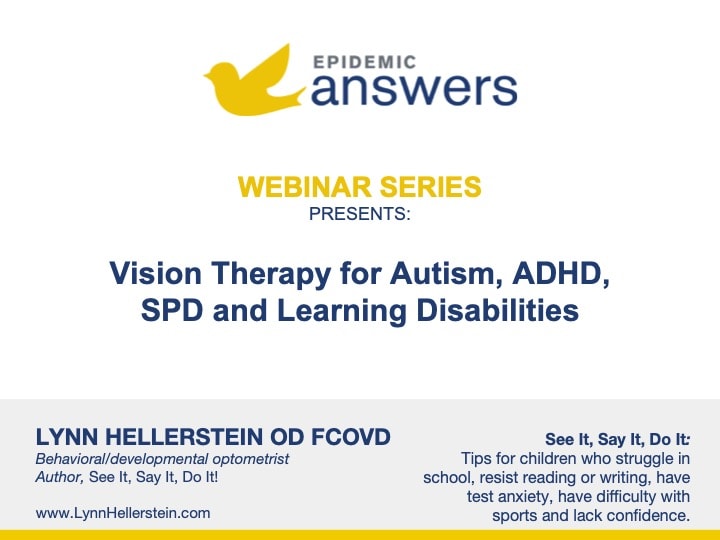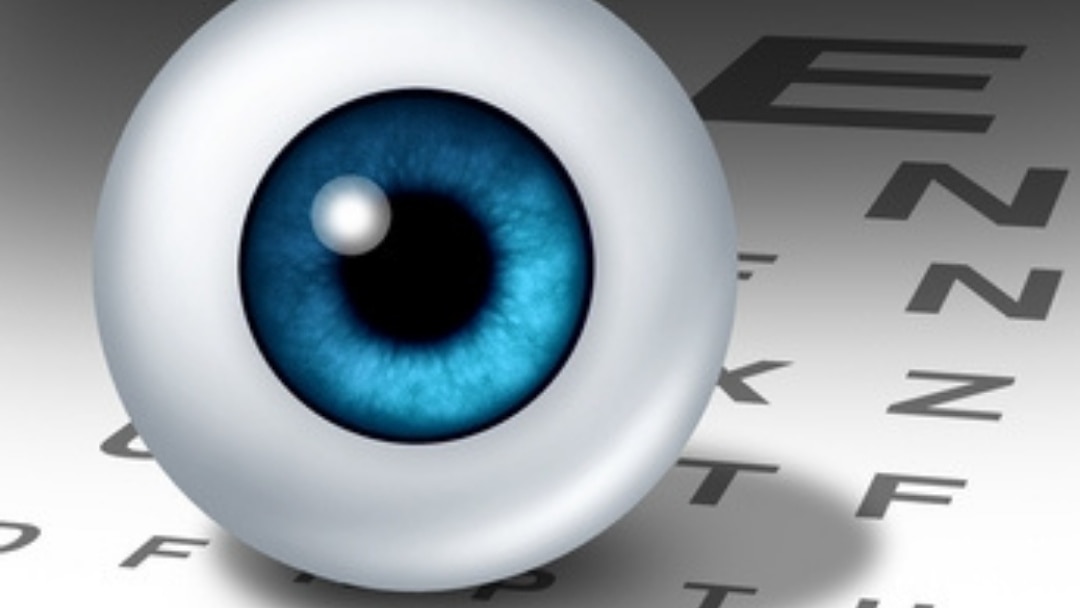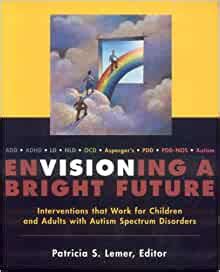Vision therapy is very often overlooked in children with autism spectrum disorder, ADHD, Sensory Processing Disorder or learning disabilities.
Too often parents just assume that particular behaviors or symptoms their child displays are related to their child’s diagnosis, when in fact they are developmental vision problems or visual dysfunction. Think of vision therapy as neurological training or rehabilitation for the entire visual system: eyes, brain and body. It can be a game changer for many children.
Visual symptoms can occur if there are genetic (crossed-eyes, wandering eye) or environmental factors such as:
- Stress
- Trauma to the nervous system
- Poor sensorimotor development
- Heavy metal toxicity
- Concussion
- Traumatic birth
- High fever
- Surgery
Vision Therapy Program
Vision therapy is provided by a behavioral/developmental optometrist (OD) who creates a 30-minute, once-or-twice-a-week, individualized supervised program of vision exercises that focus on:
- Visual activities
- Motor development
- Visual-motor integration
- Spatial awareness
- Visual perception
- Memory
- Focus
- Concentration
- Hand-eye coordination
- Perceptual-cognitive deficiencies
Supplemental visual activities are typically done at home a few days a week for more reinforcement.
Vision Therapy Goals
Typical vision-therapy goals for children are:
- To be able to use their two eyes together simultaneously and effectively
- To integrate vision with movement using other senses automatically without struggle and effort
- To develop or improve fundamental visual skills and abilities
- To improve visual comfort, ease and efficiency
- To change how a child processes or interprets visual information
Linking up the Brain Hemispheres
One of the key goals of this therapy is to have children process information with both eyes simultaneously. When the left and right hemispheres in the brain are working together more efficiently, then so do the eyes!
Simple tasks such as throwing and catching a ball or putting pegs in holes on a board or throwing bean bags at a target, can now be accomplished. More sophisticated functions such as visual-motor skills (writing, reading), organizational skills, the ability to process language and gain visual thinking skills will all develop gradually.
Benefits of Vision Therapy
Vision therapy can also help academically by improving:
- Math skills
- Reading skills
- Spelling skills
- Homework
- Writing skills
- Handwriting skills
After numerous vision therapy sessions, children may experience:
- Lower frustration
- Less anger
- Fewer non-compliant behaviors
- Fewer meltdowns
- Improved self-esteem
- Improved academic improvement
- Better self-confidence
Many children with autism may not show any interest in learning how to read and handwrite because they have difficulty with eye contact, are unable to focus because of poor tracking abilities and poor hand eye-coordination.
Vision therapy and Handwriting without Tears done together can help tremendously with children with autism.
Who Benefits from Vision Therapy
Who are the children that can benefit from vision therapy?
Children with:
- Visual disabilities
- Learning disabilities
- Amblyopia (lazy eye)
- ADHD/ADD
- Traumatic Brain Injury (TBI)
- Concussion
- Autism spectrum disorder
- Sensory Processing Disorder
- Convergence insufficiency
- Hyperlexia
- Dyslexia
- Poor hand-eye coordination
- Twice exceptionality
- Double vision
- Nonverbal learning disability (NLD)
- Eye tracking problems
- Special education needs
- Strabismus (crossed eyes)
Still Looking for Answers?
Visit the Epidemic Answers Practitioner Directory to find a practitioner near you.
Join us inside our online membership community for parents, Healing Together, where you’ll find even more healing resources, expert guidance, and a community to support you every step of your child’s healing journey.
Sources & References
Egset, K., et al. Magno App: Exploring Visual Processing in Adults with High and Low Reading Competence. Scandinavian Journal of Educational Research. 07 Jan 2020.
Kaplan, M., et al. Strabismus in Autism Spectrum Disorder. Focus on Autism and Other Developmental Disabilities. 1999.
Khanna, R.K., et al. Ophthalmological findings in children with autism spectrum disorder. Graefes Arch Clin Exp Ophthalmol. 2020 Apr;258(4):909-916.
Little, J.A. Vision in children with autism spectrum disorder: a critical review. Clin Exp Optom. 2018 Jul;101(4):504-513.
Resources
Books
Hellerstein, Lynn. 50 Tips to Improve Your Sports Performance. HiClear Publishing LLC, 2013.
Hellerstein, Lynn. Expand Your Vision Beyond Sight.HiClear Publishing LLC, 2012.
Hellerstein, Lynn. Organize It. HiClear Publishing LLC, 2010.
Hellerstein, Lynn. See It, Say It, Do It. HiClear Publishing LLC, 2012.
Lemer, Patricia S. Envisioning a Bright Future: Interventions That Work for Children and Adults with Autism Spectrum Disorders. Optometric Extension Program Foundation, 2008.




